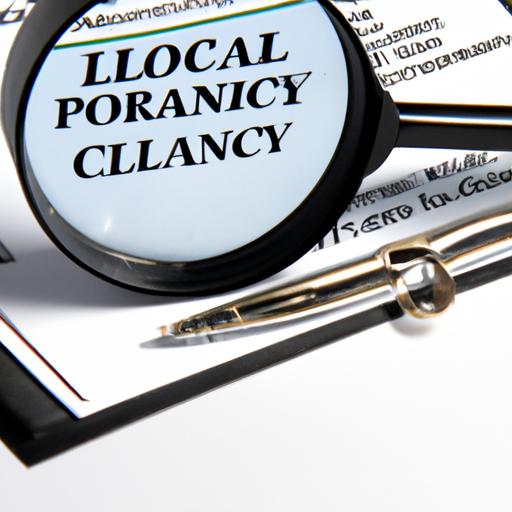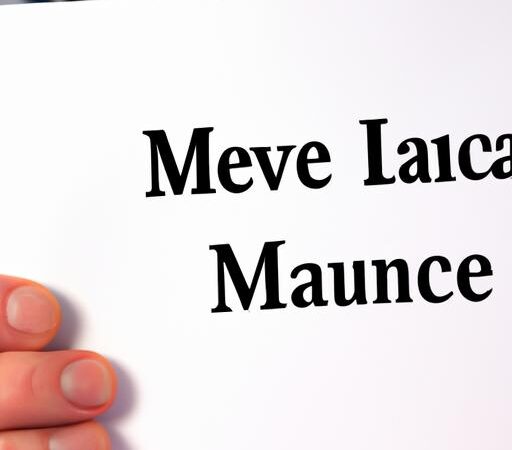How to Assess the Quality and Comprehensiveness of Car Insurance Coverage

When it comes to protecting your vehicle and yourself on the road, having the right car insurance coverage is crucial. But with so many options available, how do you assess the quality and comprehensiveness of car insurance coverage? In this article, I will guide you through the process of evaluating your car insurance coverage to ensure you have the protection you need.
Car accidents can happen at any time, and the consequences can be devastating. That’s why it’s essential to assess the quality of your car insurance coverage to ensure you have the necessary financial protection in case of an accident. By understanding the different aspects of car insurance coverage and evaluating its comprehensiveness, you can make an informed decision that suits your needs.
In this article, I will cover everything you need to know about assessing car insurance coverage. From understanding the different types of coverage to evaluating policy limits, deductibles, and additional coverage options, I will provide you with the tools to make an informed decision. We will also discuss how to evaluate the comprehensiveness of your coverage, including protection against accidents, theft, vandalism, and medical expenses.
Assessing car insurance coverage can be a daunting task, but with the right knowledge and guidance, you can navigate through the complexities and find the coverage that offers the best protection for you and your vehicle. So, let’s dive in and discover How to assess the quality and comprehensiveness of car insurance coverage, ensuring peace of mind on the road.
Understanding Car Insurance Coverage
Car insurance coverage is a vital component of responsible vehicle ownership. To assess the quality and comprehensiveness of your car insurance coverage, it’s crucial to have a clear understanding of its definition, types, and the factors that influence coverage options and premiums.
A. Definition and Types of Car Insurance Coverage
Car insurance coverage encompasses various types of protection for you, your vehicle, and others involved in an accident. The most common types of car insurance coverage include:
-
Liability Coverage: This type of coverage is required in most states and provides financial protection if you are at fault in an accident that causes bodily injury or property damage to others.
-
Collision Coverage: Collision coverage pays for the repair or replacement of your vehicle if it is damaged in a collision with another vehicle or object, regardless of fault.
-
Comprehensive Coverage: Comprehensive coverage protects your vehicle against non-collision-related incidents such as theft, vandalism, natural disasters, or accidents involving animals.
-
Personal Injury Protection (PIP): PIP coverage covers medical expenses, lost wages, and other related costs for you and your passengers, regardless of fault.
-
Uninsured/Underinsured Motorist Coverage: This coverage provides protection if you are involved in an accident with a driver who is uninsured or lacks sufficient insurance to cover your damages.
B. Factors Affecting Coverage Options and Premiums
When assessing car insurance coverage, it’s essential to consider the factors that influence coverage options and premiums. These factors can vary depending on the insurance provider and your unique circumstances. Some common factors include:
-
Driving Record: Your driving history, including any accidents or traffic violations, can impact your coverage options and premiums.
-
Vehicle Type: The make, model, and value of your vehicle can affect the coverage options available and the cost of your insurance.
-
Location: Where you live and park your vehicle can influence your coverage options and premiums. Areas with higher crime rates or greater traffic congestion may have higher insurance costs.
-
Deductibles and Policy Limits: The deductible is the amount you pay out of pocket before your insurance coverage kicks in, while policy limits determine the maximum amount your insurance will cover. Higher deductibles may lower your premiums, but you should ensure you can afford the deductible if an accident occurs.
By understanding the definition, types, and factors influencing car insurance coverage, you can make informed decisions when assessing the quality and comprehensiveness of your coverage. In the next section, we will explore the key factors to consider when evaluating the quality of your car insurance coverage.
Key Factors for Assessing Quality Coverage
When assessing the quality of car insurance coverage, there are several key factors to consider. These factors will help you determine if the coverage meets your needs and offers adequate protection. Let’s take a closer look at these key factors:
A. Policy Limits and Deductibles
Policy limits refer to the maximum amount the insurance company will pay out for a claim. It’s crucial to understand the policy limits as they directly impact the level of protection you will receive. Higher policy limits provide more coverage but may come with higher premiums.
Deductibles, on the other hand, are the amount you must pay out of pocket before your insurance coverage kicks in. It’s important to find a balance between a deductible that is affordable for you and a coverage level that adequately protects you in case of an accident or damage.
B. Coverage for Bodily Injury and Property Damage
Bodily injury and property damage coverage are essential components of car insurance. Bodily injury coverage protects you if you cause an accident that results in injuries to others. Property damage coverage, on the other hand, covers the cost of repairs or replacement of other people’s property damaged in an accident you caused.
When assessing the quality of your car insurance coverage, ensure that the policy provides sufficient coverage for both bodily injury and property damage. This will protect you financially if you are found liable for an accident.
C. Additional Coverage Options
In addition to basic coverage, many car insurance policies offer additional coverage options. These options can include collision coverage, which covers damage to your vehicle in a collision, and comprehensive coverage, which protects your vehicle from non-collision incidents such as theft, vandalism, or natural disasters.
Considering these additional coverage options is crucial as they provide a higher level of protection for your vehicle. Assessing the quality of your coverage involves evaluating if these options are included or if they can be added to your policy.
D. Coverage for Uninsured or Underinsured Motorists
Another important factor to consider when assessing the quality of car insurance coverage is coverage for uninsured or underinsured motorists. This type of coverage protects you if you are involved in an accident with a driver who doesn’t have insurance or doesn’t have enough coverage to fully compensate you for your losses.
Having coverage for uninsured or underinsured motorists ensures that you are protected even if the responsible party doesn’t have adequate insurance. It’s essential to review your policy to ensure this coverage is included and sufficient for your needs.
By considering these key factors when assessing the quality of car insurance coverage, you can make an informed decision and choose a policy that provides the protection you need. Remember to carefully review your policy and consult with an insurance professional to ensure you have the right coverage in place.
Evaluating Comprehensiveness of Car Insurance Coverage
When assessing the quality and comprehensiveness of your car insurance coverage, it is important to evaluate specific areas to ensure you have adequate protection in various scenarios. Let’s delve into the key aspects you should consider:
A. Assessing Coverage for Accidents and Collisions
One of the primary reasons for having car insurance is to protect yourself and your vehicle in the event of an accident or collision. When evaluating the comprehensiveness of your coverage, consider the following:
-
Liability Coverage: This coverage is essential as it protects you financially if you are at fault in an accident and liable for bodily injury or property damage to others. Ensure that your liability coverage limits are sufficient to cover potential damages.
-
Collision Coverage: Collision coverage helps cover the cost of repairs or replacement of your vehicle if it is damaged in a collision, regardless of fault. Assess the coverage limits and deductibles for collision coverage to ensure they align with your needs.
B. Evaluating Coverage for Theft, Vandalism, and Natural Disasters
Car theft, vandalism, and natural disasters can be unexpected and financially burdensome. To evaluate the comprehensiveness of your coverage in these situations, focus on the following:
- Comprehensive Coverage: Comprehensive coverage protects your vehicle against non-collision-related damages, such as theft, vandalism, fire, or natural disasters. Review the coverage limits and deductibles for comprehensive coverage to ensure they adequately protect your vehicle.
C. Analyzing Coverage for Medical Expenses and Personal Injury
In the unfortunate event of an accident or injury, having reliable coverage for medical expenses and personal injury is crucial. Consider the following when evaluating the comprehensiveness of your coverage:
-
Medical Payments Coverage: Medical payments coverage helps cover medical expenses for you and your passengers, regardless of fault. Assess the coverage limits and any exclusions or limitations associated with medical payments coverage.
-
Personal Injury Protection (PIP): PIP coverage provides broader protection for medical expenses, lost wages, and other related costs resulting from an accident. Evaluate the extent of PIP coverage and any additional benefits it may offer.
By thoroughly evaluating the coverage for accidents and collisions, theft, vandalism, natural disasters, medical expenses, and personal injury, you can ensure the comprehensiveness of your car insurance coverage. Remember, it’s essential to review and update your coverage regularly to meet your evolving needs and maintain peace of mind on the road.
Researching and Comparing Insurance Providers
When it comes to assessing the quality and comprehensiveness of car insurance coverage, researching and comparing insurance providers is a crucial step. Here, I will highlight the importance of conducting thorough research, the factors to consider when comparing coverage options, and how to utilize online resources and customer reviews to make an informed decision.
A. Importance of Researching Different Insurance Companies
Researching different insurance companies is essential to ensure you find the right provider that meets your needs. Each insurance company has its own policies, coverage options, and pricing structures. By researching and comparing multiple providers, you can gain a better understanding of what each company offers and find the one that aligns with your requirements.
Start by evaluating the reputation and financial stability of insurance companies. Look for well-established providers with a strong track record of customer satisfaction and prompt claims processing. This information can be found through industry reports, customer testimonials, or by checking with your state’s insurance department.
B. Factors to Consider When Comparing Coverage Options
When comparing coverage options, it’s important to consider several key factors. First, assess the policy limits and deductibles offered by each insurance company. Higher policy limits and lower deductibles may offer more comprehensive coverage but could also result in higher premiums. Evaluate your budget and risk tolerance to strike a balance that suits your needs.
Next, consider the specific coverage options provided. Look for comprehensive coverage that includes protection against accidents, theft, vandalism, and natural disasters. Additionally, assess the coverage for medical expenses and personal injury, as these can be significant costs in the event of an accident.
C. Utilizing Online Resources and Customer Reviews
The internet provides a wealth of resources to research and compare insurance providers. Visit the websites of different companies to gather information about their coverage options, pricing, and additional benefits. Many websites also offer tools to compare quotes from multiple insurance providers, allowing you to easily evaluate different options.
Customer reviews can also be a valuable source of information. Look for reviews on independent platforms or forums where people share their experiences with different insurance companies. Pay attention to feedback regarding claims processing, customer service, and overall satisfaction. This can give you insights into how each company treats its customers and handles claims.
By conducting thorough research, considering key factors, and utilizing online resources and customer reviews, you can gain a comprehensive understanding of different insurance providers and make an informed decision about your car insurance coverage. Let’s move on to the next section to learn more about evaluating the comprehensiveness of your coverage.
Conclusion
In conclusion, assessing the quality and comprehensiveness of your car insurance coverage is of utmost importance to ensure you have the necessary protection in case of an accident. By understanding the different types of coverage, evaluating policy limits, deductibles, and additional options, and researching and comparing insurance providers, you can make an informed decision that suits your needs.
Remember, regularly reviewing and updating your car insurance coverage is crucial. As life circumstances change, your insurance needs may evolve as well. Stay proactive and ensure that your coverage aligns with your current situation.
When it comes to finding comprehensive car insurance coverage, it’s essential to consider reputable insurance providers that prioritize customer satisfaction and have a track record of reliability. Utilize online resources, read customer reviews, and compare coverage options to make an informed choice.
At tintucvn365.com, we understand the significance of comprehensive car insurance coverage. We hope this article has provided you with valuable insights and guidance on assessing the quality and comprehensiveness of car insurance coverage. Remember, the right coverage can offer you peace of mind on the road, protecting you and your vehicle from unexpected events.
So, take the time to assess your car insurance coverage today. Evaluate its quality, comprehensiveness, and ensure it meets your specific needs. Don’t hesitate to reach out to reputable insurance providers for assistance. Invest in your protection and drive with confidence knowing you have the right car insurance coverage in place. Stay safe and enjoy the journey!





